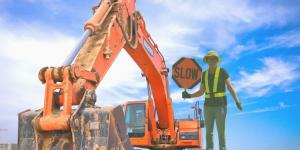ANSI Reflective Harnesses Deliver Safety and Performance Over Traditional Vests
Ensuring safety for construction, utility, and industrial workers is not easy. High visibility apparel is necessary to ensure safety and peace of mind.
People come in many shapes and sizes, which causes a wide range of sizing needs for safety gear. Managing this provides unique challenges when outfitting crews with properly fitting hi-vis clothing.”
GARDEN GROVE, CA, UNITED STATES, February 18, 2022 /EINPresswire.com/ -- Ensuring the safety of construction, utility, and industrial workers is not easy. These workers are more likely to experience accidents on job sites as compared to employees in other industries. Therefore, high visibility safety apparel (HVSA) may be necessary to ensure a high level of safety and peace of mind. HVSA helps increase visibility on the job site and, as a result, workers' safety.— Andrew Scherz, Marketing Director
While there are different types of HVSA available in the market, wearing a high-visibility harness is an excellent method of alerting drivers and other machinery operators to the presence of workers. It is extremely important in hazardous settings like near roadways, in the dark, and where employees may be blocked by trees, traffic barriers, or construction equipment.
There is a lot to learn about high visibility safety apparel, especially reflective harnesses. Therefore, we've put together this guide to help understand the importance of using the right HVSA and how it may improve safety and performance.
How HVSA Works
High visibility apparel is typically made using colorful fluorescent elements that are more vibrant than typical colors. The pigmentation converts invisible ultraviolet radiation emitted by the sun into a brilliant, visible light. In low light settings, such as twilight, morning, or on cloudy days, fluorescent colors can be more clearly visible.
Some parts of HVSA, such as tape and strips, are constructed of light-returning materials. Reflective materials work best in low-light environments since they don't produce much contrast. Both fluorescent and reflecting materials are commonly used in hi-vis clothing, which is why most of it is made from combinations of the two items.
What Is A High-Visibility Reflective Harness?
A hi-vis reflective harness is a kind of safety apparel that workers can wear over a variety of workwear and uniforms. These types of harnesses are often adjustable to fit many sizes and adapt to warm and cold weather clothing requirements.
Harness designs must adhere to specific design requirements provided by the American National Standard for High-Visibility Safety Apparel and Accessories. This makes it important to ensure that the HVSA invested in is ANSI-rated, especially when an ANSI rating is required on the worksite.
ANSI has developed high visibility standards to assist businesses and safety managers in any industry in selecting high visibility clothes that can help protect their employees. The standard classifies garments based on their projected use settings and job site activities.
Type O is used for off-road
Type R is used for roadway and temporary traffic management
Type P is used for public safety operations
OSHA interpreted MUTCD 2009 to require workers on highways and in road construction work zones to wear high visibility clothes when flagging, or at any other time, they are exposed to construction equipment or public vehicle traffic.
To be ANSI 107 compliant, reflective workwear needs to have these three basic qualities:
Visibility: The garment fabric has a high visibility fluorescent color, usually green, yellow or, orange.
Reflective: The garment has a certain amount of reflective material, like reflective tape, that is permanently attached and positioned to be easily seen.
Tested: The garment needs to pass specific visibility and reflection tests designed by ANSI and performed by an independent third party for approval.
Dangers of Poor-Fitting Hi-Vis Clothing
It is important to have comfortable hi-vis clothing to outfit your team.
Women workers are more vulnerable to hazards of poor-fitting HVSA since clothing is frequently intended for men, who are typically larger in stature. Hi-vis shirts that are not designed for a female body type may have loose sleeves or billow out at the torso, resulting in the cloth getting entangled with equipment.
On the other side, wearing too-small clothes can also lead to complications, such as the inability to work properly or productively due to discomfort caused by restrictive clothing, or limiting the workers' range of motion. This can also raise the likelihood of an accident.
Dangers of Improperly Maintained HVSA
Clothing size is not the only hazard associated with HVSA. There are several dangers associated with improperly maintained clothing. For example, rashes and other skin problems can be caused by work gear that is dirty or oil-soaked.
Missing buttons can cause cuffs and collars to become loose, making them more susceptible to becoming entangled in machinery. Work pants that are too long must be cuffed, which is another problem. The cuffs may become entangled in equipment, resulting in a fall.
Loose belts and unclipped ties also pose a concern since they can become entangled in machinery or snagged on any projecting bar or hook, among other things.
A Reflective Safety Harness: An Easy Solution for all Safety Concerns
A Class 1 ANSI Reflective Harness is the ultimate solution for all safety risks that arise from ill-fitting, uncomfortable, and poorly maintained HVSA. If it is a Type O HVSA, it is designed for off-road workers. The harness is cooler and more comfortable than a regular vest, and it still meets all ANSI safety criteria. It offers complete flexibility for a personalized fit.
Andrew Scherz
360 USA
+1 714-717-0702
sales@360usaproducts.com
Visit us on social media:
Facebook
LinkedIn

